
Charles Marion Russell Painting Reproductions 2 of 2
1864-1926
American Realist Painter
39 Charles Marion Russell Paintings
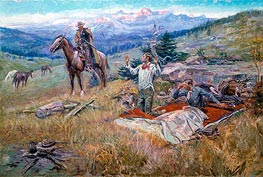
The Call of the Law 1911
Oil Painting
$1407
$1407
Canvas Print
$62.95
$62.95
SKU: RCM-16444
Charles Marion Russell
Original Size: 61 x 91.4 cm
Public Collection
Charles Marion Russell
Original Size: 61 x 91.4 cm
Public Collection

In Without Knocking 1909
Oil Painting
$1436
$1436
Canvas Print
$62.95
$62.95
SKU: RCM-16445
Charles Marion Russell
Original Size: 51 x 76 cm
Amon Carter Museum, Texas, USA
Charles Marion Russell
Original Size: 51 x 76 cm
Amon Carter Museum, Texas, USA
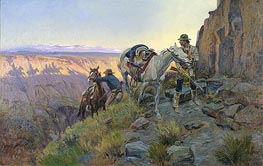
When Shadows Hint Death 1915
Oil Painting
$1378
$1378
SKU: RCM-16446
Charles Marion Russell
Original Size: 76.2 x 101.6 cm
Public Collection
Charles Marion Russell
Original Size: 76.2 x 101.6 cm
Public Collection

Innocent Allies 1913
Oil Painting
$1474
$1474
Canvas Print
$62.27
$62.27
SKU: RCM-16447
Charles Marion Russell
Original Size: 61 x 91.4 cm
Gilcrease Museum, Tulsa, USA
Charles Marion Russell
Original Size: 61 x 91.4 cm
Gilcrease Museum, Tulsa, USA
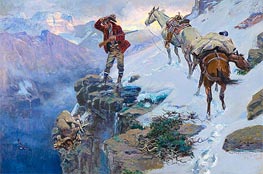
Meat's Not Meat Till It's in the Pan 1915
Oil Painting
$1423
$1423
Canvas Print
$61.75
$61.75
SKU: RCM-16448
Charles Marion Russell
Original Size: 58.4 x 89 cm
Gilcrease Museum, Tulsa, USA
Charles Marion Russell
Original Size: 58.4 x 89 cm
Gilcrease Museum, Tulsa, USA
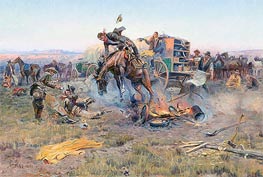
The Camp Cook's Troubles 1912
Oil Painting
$1904
$1904
Canvas Print
$62.95
$62.95
SKU: RCM-16449
Charles Marion Russell
Original Size: 76.2 x 111.8 cm
Gilcrease Museum, Tulsa, USA
Charles Marion Russell
Original Size: 76.2 x 111.8 cm
Gilcrease Museum, Tulsa, USA
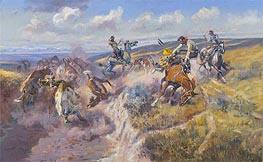
A Tight Dally and a Loose Latigo 1920
Oil Painting
$1505
$1505
Canvas Print
$61.75
$61.75
SKU: RCM-16450
Charles Marion Russell
Original Size: 76.8 x 122.6 cm
Amon Carter Museum, Texas, USA
Charles Marion Russell
Original Size: 76.8 x 122.6 cm
Amon Carter Museum, Texas, USA
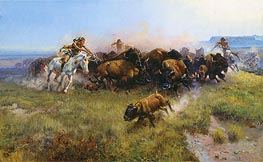
The Buffalo Hunt 1919
Oil Painting
$1417
$1417
Canvas Print
$61.75
$61.75
SKU: RCM-16451
Charles Marion Russell
Original Size: 76.5 x 122.2 cm
Amon Carter Museum, Texas, USA
Charles Marion Russell
Original Size: 76.5 x 122.2 cm
Amon Carter Museum, Texas, USA
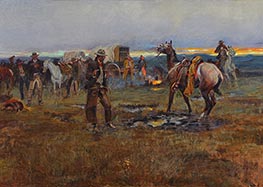
When Horses Talk There's Slim Chance for Truce 1915
Oil Painting
$1348
$1348
Canvas Print
$62.27
$62.27
SKU: RCM-16452
Charles Marion Russell
Original Size: 61 x 91.4 cm
Public Collection
Charles Marion Russell
Original Size: 61 x 91.4 cm
Public Collection
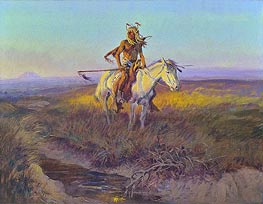
The Scout 1915
Oil Painting
$1010
$1010
Canvas Print
$71.80
$71.80
SKU: RCM-16453
Charles Marion Russell
Original Size: 45.7 x 61 cm
Public Collection
Charles Marion Russell
Original Size: 45.7 x 61 cm
Public Collection
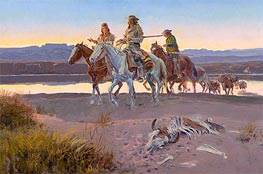
Carson's Men 1913
Oil Painting
$1317
$1317
Canvas Print
$61.77
$61.77
SKU: RCM-16454
Charles Marion Russell
Original Size: 61 x 90.2 cm
Gilcrease Museum, Tulsa, USA
Charles Marion Russell
Original Size: 61 x 90.2 cm
Gilcrease Museum, Tulsa, USA

Single-Handed 1912
Oil Painting
$2027
$2027
Canvas Print
$83.38
$83.38
SKU: RCM-16455
Charles Marion Russell
Original Size: 73.7 x 81.3 cm
Public Collection
Charles Marion Russell
Original Size: 73.7 x 81.3 cm
Public Collection

A Mix Up 1910
Oil Painting
$1782
$1782
Canvas Print
$61.75
$61.75
SKU: RCM-16456
Charles Marion Russell
Original Size: 77.5 x 103 cm
Rockwell Museum of Western Art, New York, USA
Charles Marion Russell
Original Size: 77.5 x 103 cm
Rockwell Museum of Western Art, New York, USA
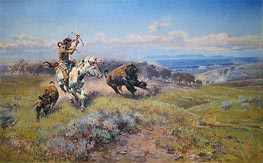
Fighting Meat 1919
Oil Painting
$1407
$1407
SKU: RCM-16457
Charles Marion Russell
Original Size: unknown
Cincinnati Art Museum, Ohio, USA
Charles Marion Russell
Original Size: unknown
Cincinnati Art Museum, Ohio, USA
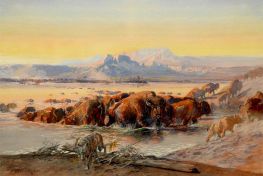
The Upper Missouri in 1840 1902
Paper Art Print
$58.48
$58.48
SKU: RCM-19533
Charles Marion Russell
Original Size: unknown
Amon Carter Museum, Texas, USA
Charles Marion Russell
Original Size: unknown
Amon Carter Museum, Texas, USA